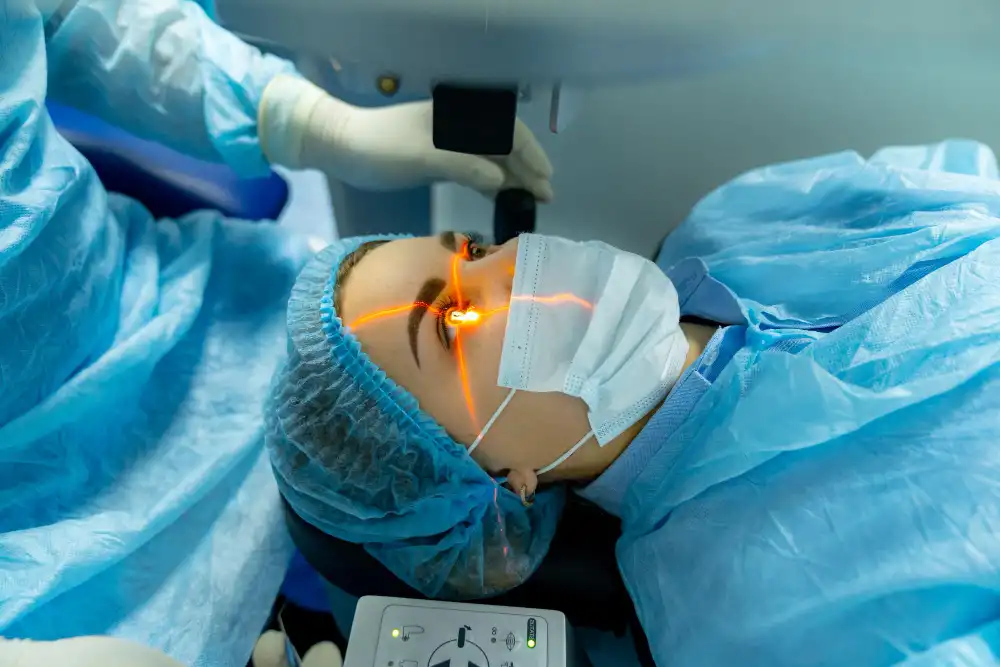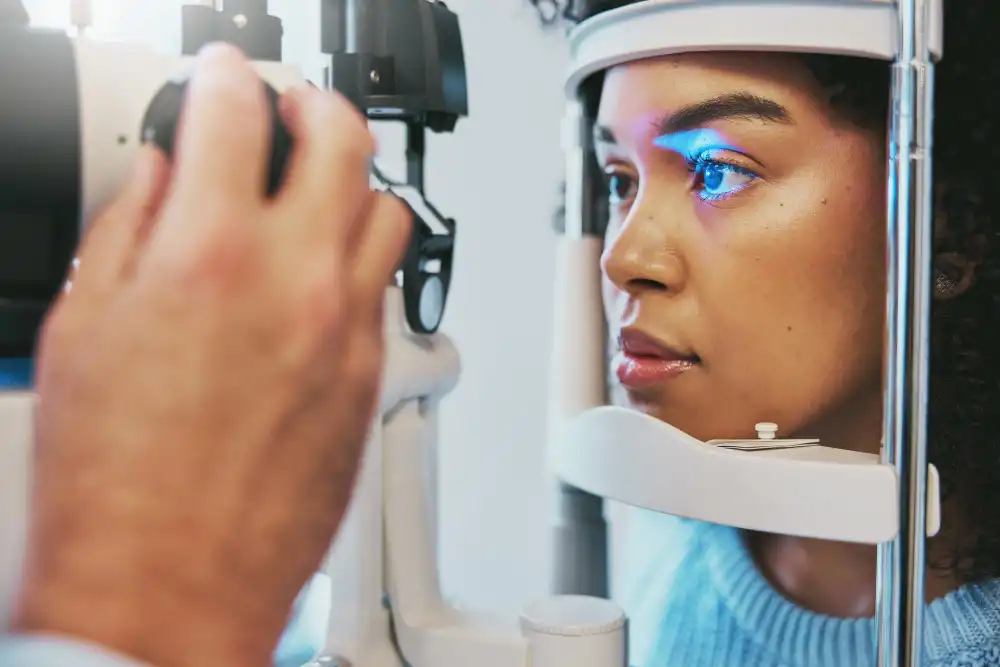
Thousands of people trust LASIK to fix their eyesight problems. It completely eliminates the need for glasses or contact lenses and gives you clear vision by reshaping your cornea. While LASIK can significantly improve your vision, the question arises, “Is LASIK permanent?”.
To answer this question, you need to take a deeper look at how LASIK works and what changes your eyes undergo with time.
In this article, we will solve this query and explore what LASIK is, how it works, is LASIK eye surgery permanent, and how common is permanent dry eye after lasik? Let’s get started!
What Is LASIK and How Does It Work?

LASER (Laser-Assisted In Situ Keratomileusis) is a laser eye surgery that addresses three types of vision problems: myopia, hyperopia, and astigmatism.
These conditions happen due to the cornea’s discontinuous shape. This deformation in shape refracts light behind or far ahead of the retina instead of on its visual nerves. So, LASIK reshapes the cornea so that light focuses directly on the retina and makes a clear image.
But how does LASIK reshape your cornea? Let’s have a deeper look.
- Step 1: Your eye surgeon puts numbing drops in your eyes instead of anesthesia. These drops remove the dryness of the eyes and reduce the painful sensations.
- Step 2: Your doctor creates a flap on the surface of the cornea with a LASIK or laser blade.
- Step 3: After creating a flap, your cornea will be reshaped using a laser. To do so, a small amount of tissue will be removed from the cornea.
- Step 4: There is no need for stitching; the Corneal flap will be left to heal independently.
- Step 5: You will start seeing clearly after 24-48 hours. However, night glares, haloes, or blurred vision are common for a few days. You will be instructed to use eye drops and take some precautions to heal. It will take a few weeks to cure permanently.
Is LASIK Treatment Permanent?
During LASIK surgery, a microscopic amount of your corneal tissue is removed, which results in a permanent change to your eye. This structural change is irreversible and does not grow back. That means there is no need to use any corrective glasses or lenses for many years because your eye problem will never grow back.
However, we know that the body’s structure changes with age. Similarly, your corneal structure may also change with age. LASIK cannot control these structural changes due to aging and vision problems, i.e., presbyopia, which come with age.
How Long Does LASIK Last for Most Patients?
For the majority of people, LASIK provides clear vision for 10 to 20 years or even longer. A long-term study showed that only 6% of patients needed a LASIK enhancement after 10 years.
Realistically, if you undergo LASIK in your 20s or 30s, you may enjoy decades of improved vision. However, some patients eventually need glasses for activities like reading or night driving, especially after age 40. That is not because LASIK failed, but it is simply a result of normal aging.
Why Vision May Still Change After LASIK
LASIK addresses only problems related to the cornea. Most people become satisfied with their vision after LASIK. However, other structural changes in the eye might lead to vision problems.
Here are some of the reasons for vision changes even after LASIK.
- Eye lenses become less flexible with age. This inflexibility is the reason behind an eye condition called presbyopia.
- Sometimes, the lens becomes cloudy, leading to blurry vision. This condition is called cataract. It can happen to you even if you have had a successful LASIK in your life.
- Another reason that LASIK may cause vision defects despite having it is that your vision is not stabilized. LASIK is recommended between the ages of 21 and 40 when vision is stabilized and there is no chance of changes in your corneal structure. However, if you get LASIK before or after your stabilized vision, your corneal shape continues changing. This change in corneal shape might lead to a vision problem in the future.
What Is a LASIK Enhancement? When and Why You Need One
A LASIK enhancement is a follow-up procedure performed when your vision changes after the initial LASIK surgery. Some patients may need this secondary treatment to fine-tune their eyesight and achieve the best possible results.
During this procedure, the surgeon retreats the cornea with a laser to ensure that it refracts light normally and produces a clear image.
According to research, only 2% of people need LASIK enhancement within one year of LASIK, and under 5% throughout their lives. Enhancements are safe and do not affect the thickness of the cornea. Doctors suggest enhancement after a thorough examination of the eye’s condition.
Is Dry Eye Permanent After LASIK?
Our eyes produce tears that lubricate them and provide protection against environmental changes. Dry eye is a condition in which the required amount of tears is not produced.
After LASIK, patients usually complain about dry eyes, which are controlled by using various drops. Almost 60% of the patients complain about dry eyes after one month of LASIK.
This problem can be treated temporarily using eye drops and will get completely normal in a few months. However, if you experienced dry eyes before LASIK, there is a higher chance that this condition may continue even after the procedure.
Explore Eye LASIK Austin, The No. #1 Choice for LASIK
If you are planning to have LASIK eye surgery, you must be looking for an experienced specialist. There is no better place than Eye LASIK Austin. With 25 years of experience, we understand that every patient and eye are unique.
Our experts keenly observe and analyze your vision problems and suggest the most suitable type of LASIK. Moreover, using modern technology, hygiene precautions, and premium tools and techniques, we ensure our patients get 100% satisfactory results.
Final Thoughts
LASIK is undoubtedly a permanent solution for everyone looking to get a clear vision without glasses or lenses. It reshapes your cornea by removing a microscopic amount of irreversible corneal tissue.
However, it cannot stop aging and structural changes that occur with age. Various vision problems, such as presbyopia, cataracts, or others due to dry eyes or inflexibility of lenses, cannot be avoided by LASIK. Those who feel the change in their vision after LASIK also get LASIK enhancement, a follow-up treatment to improve the effect of LASIK.


